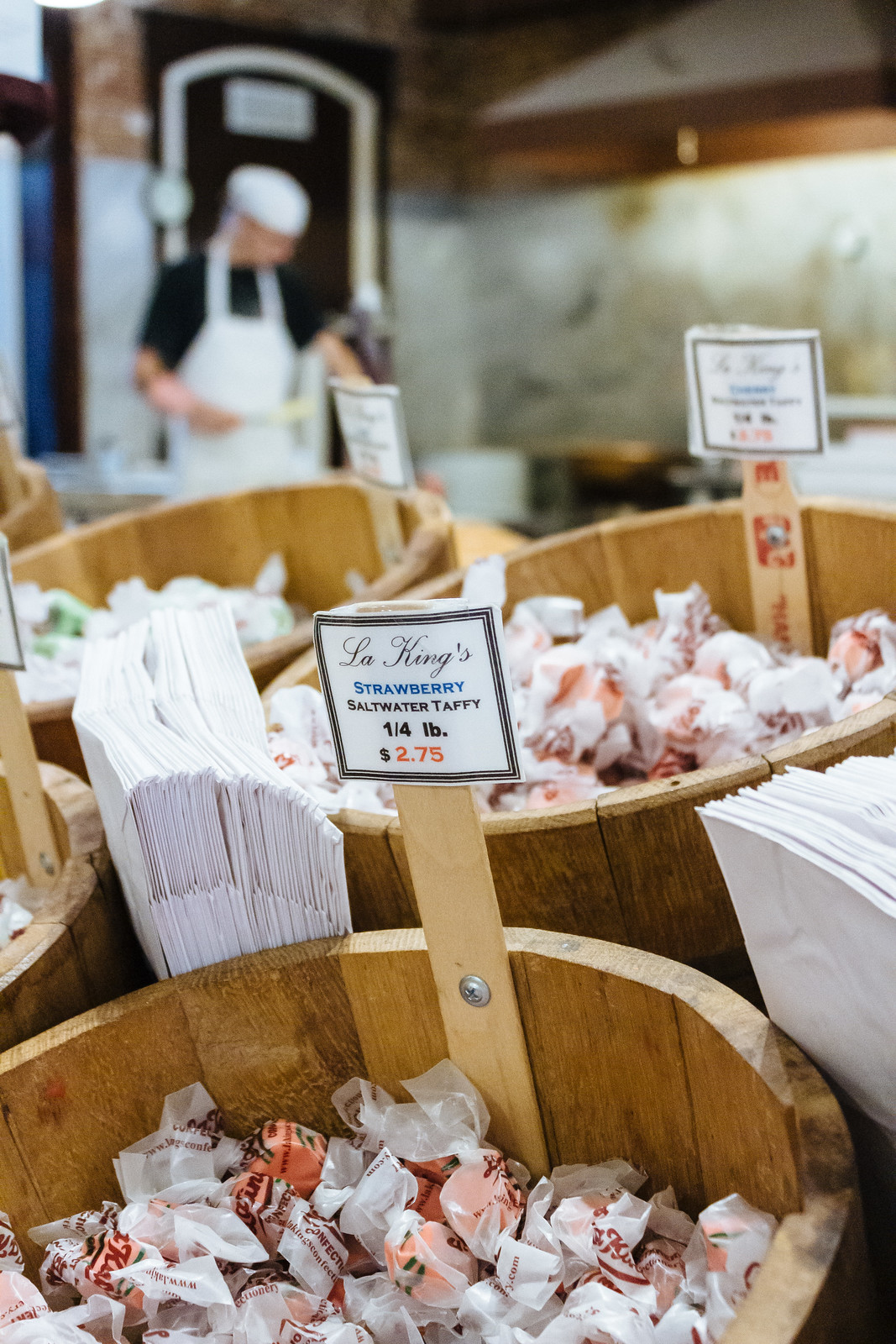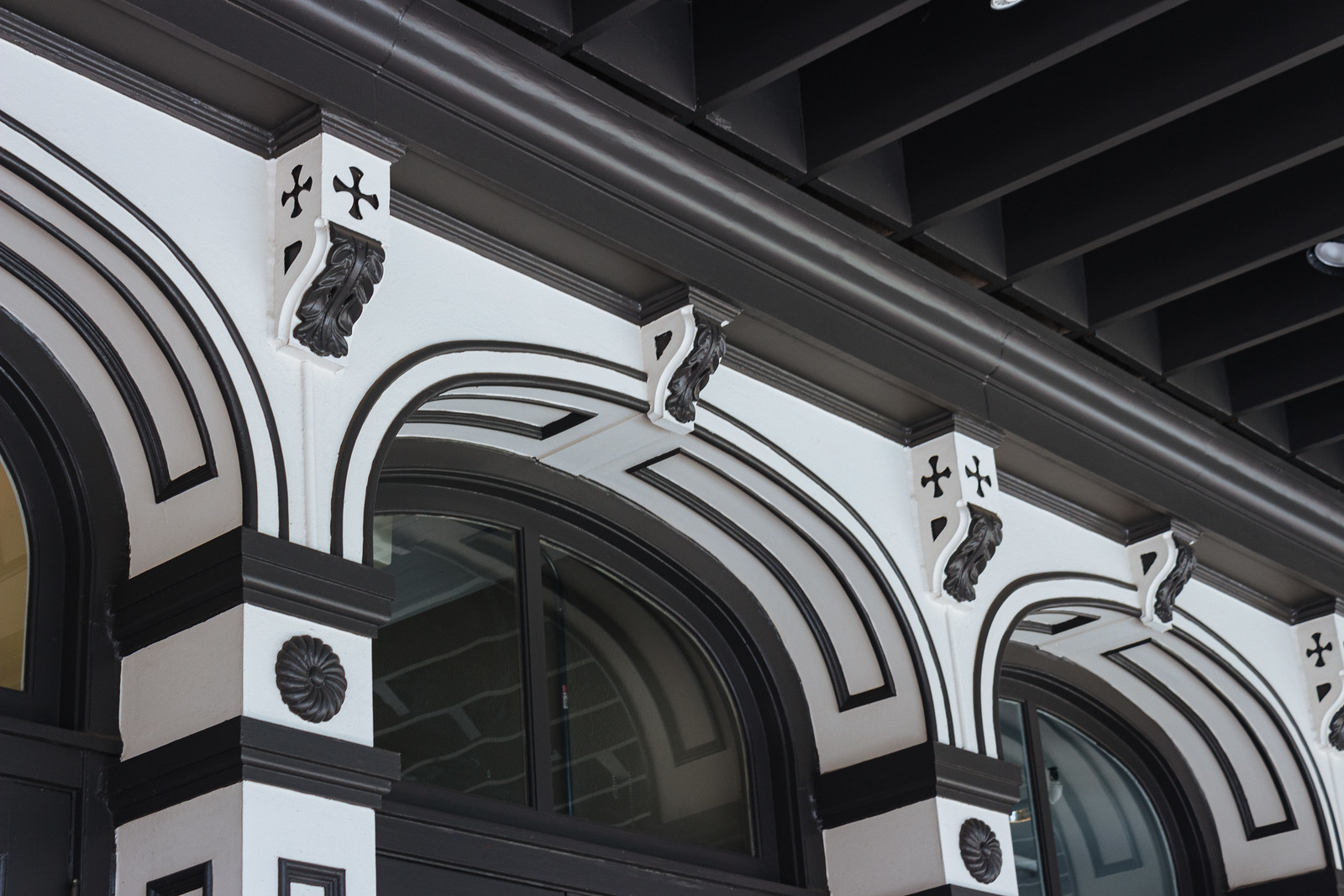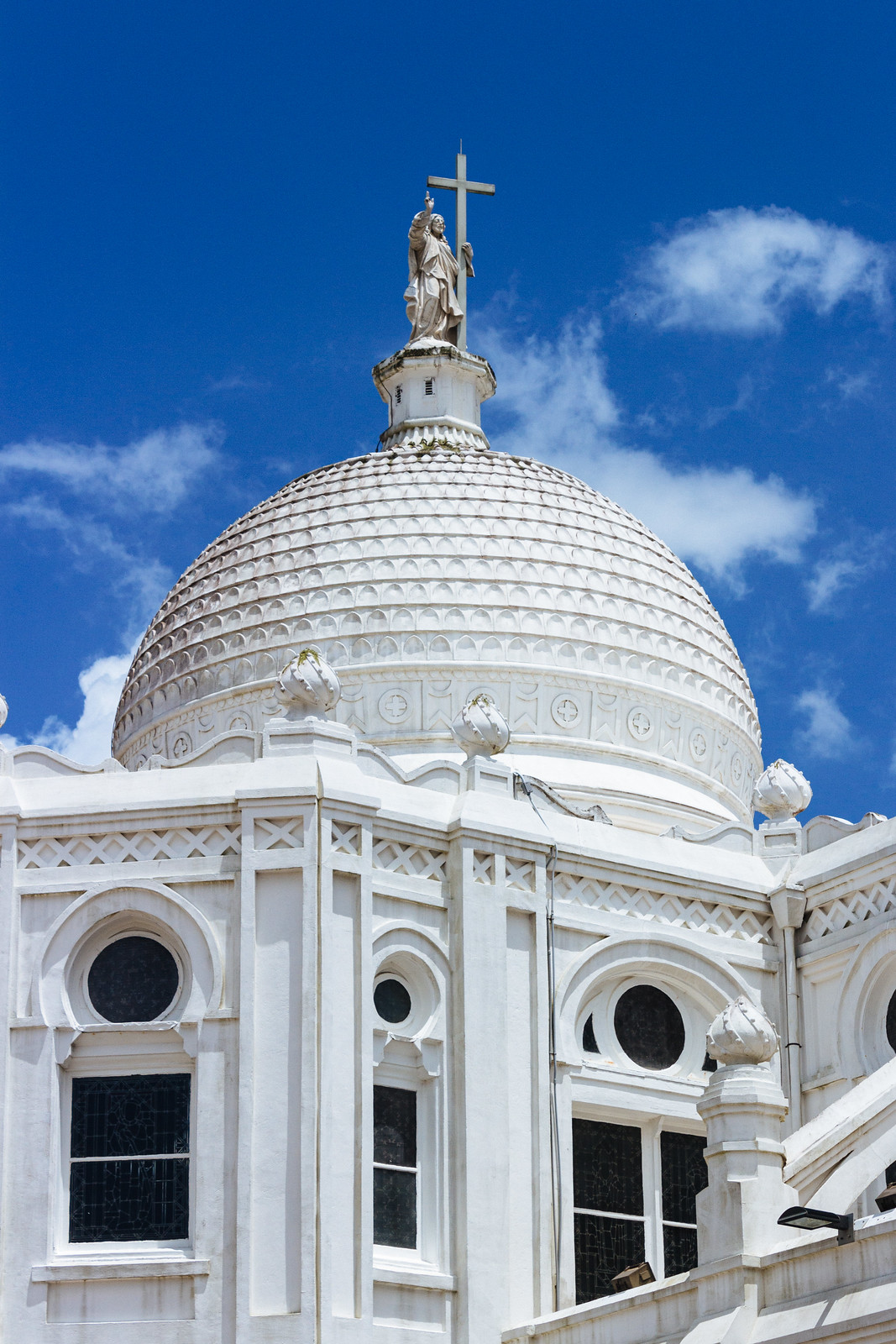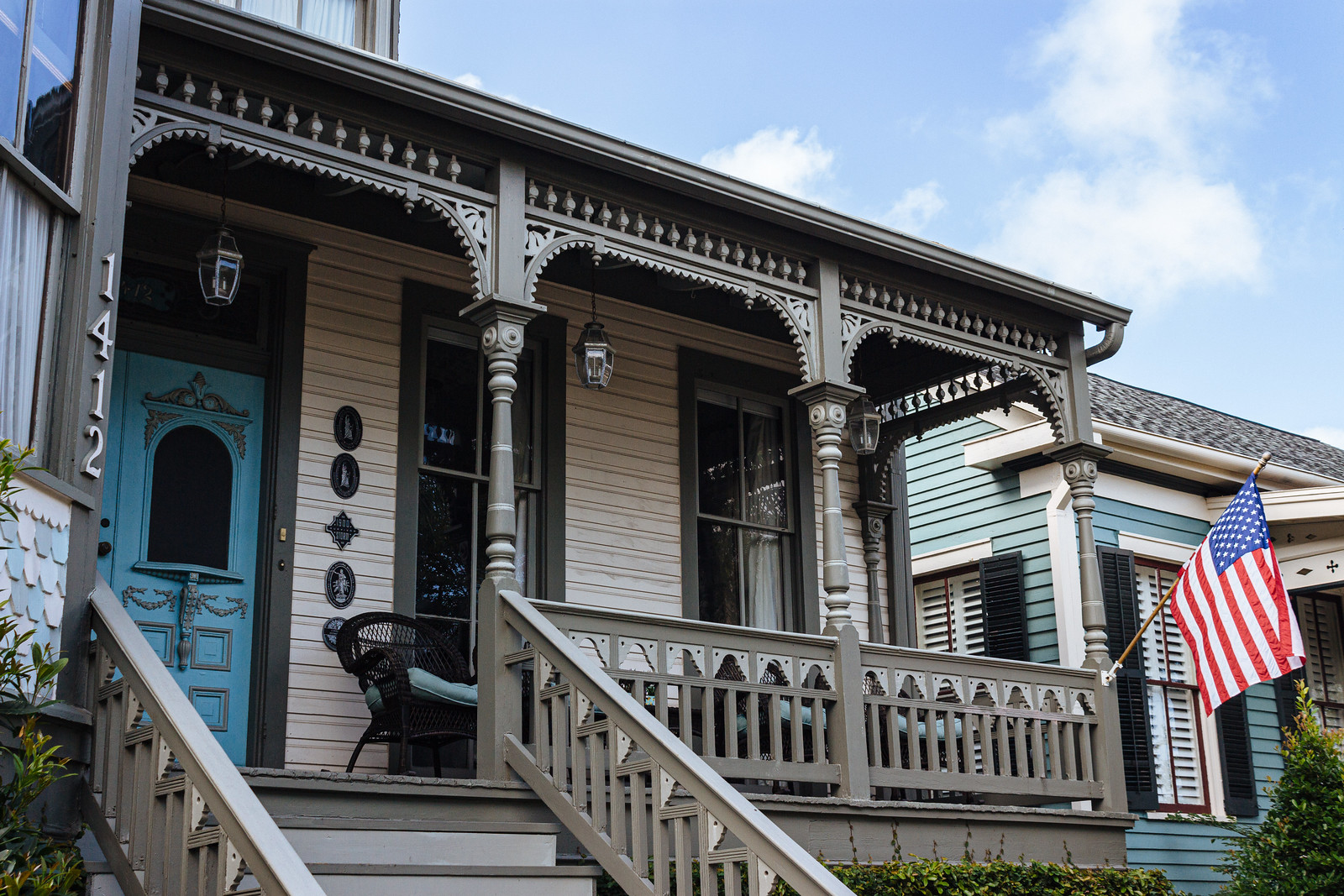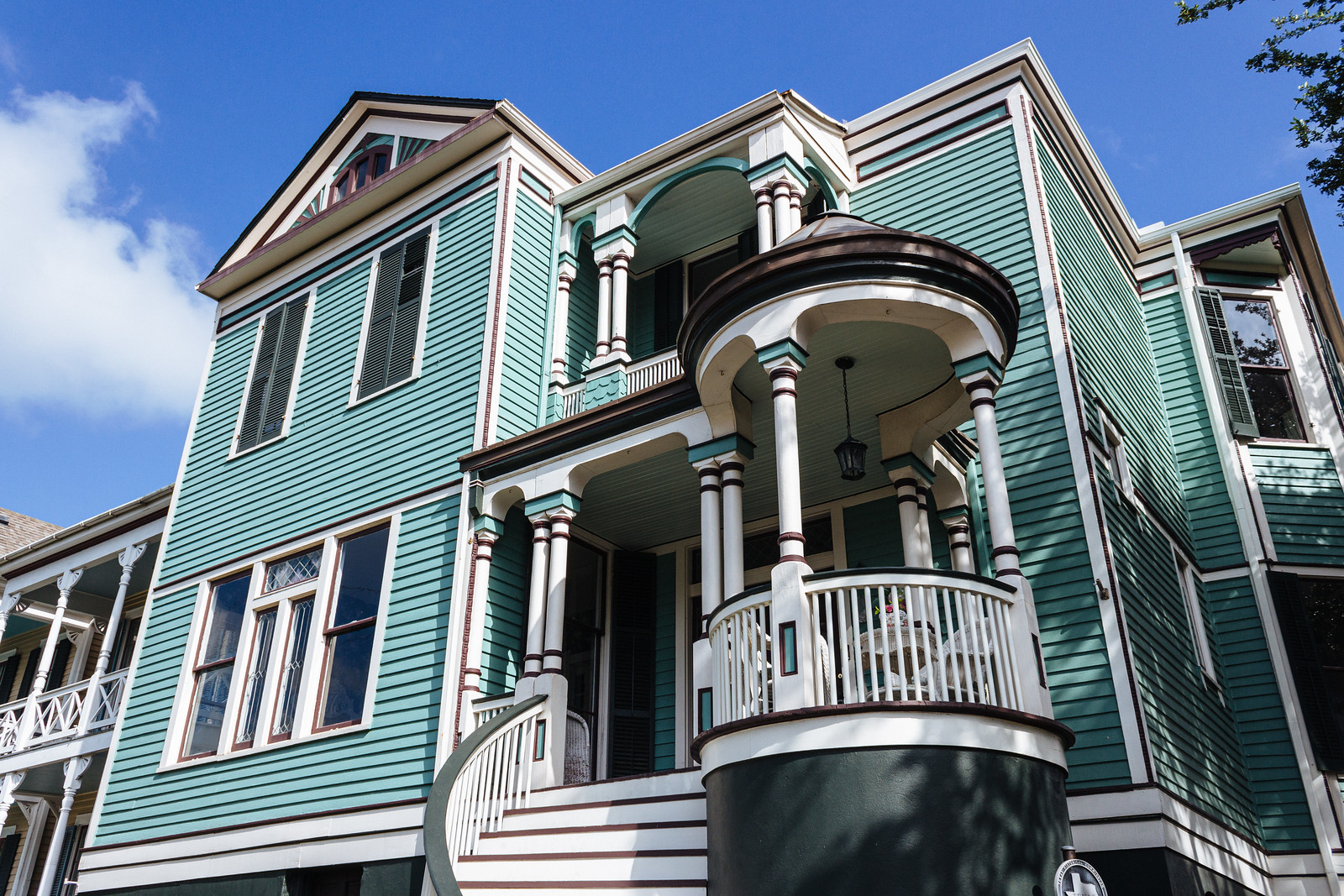Do you have any un-memories? Something you know that happened to you when you were really young but you don’t remember? Like meeting your great-aunt Genevieve when you were a toddler, moving across the country as a baby, or—and I’m stating the obvious here—being born.
Something I know that I’ve done before—but which I have zero memory at all of—is visiting the coastal city of
Galveston, Texas, as a little tyke. My parents have a photo on their fireplace mantel of my dad and me at Galveston Beach, with him showing me some seashells…apparently it was my first time at the beach, ever.
But I have zero memory of this seashell encounter ever happening, so when I went “back” to this gorgeous city southeast of
Houston over Memorial Day weekend, it really was like seeing it for the first time.
I loved taking a daytrip to this historic Gulf Coast city, where I made “new” memories by exploring some historic districts, appreciating excellent architecture, and enjoying fresh seafood. Galveston’s collection of decades-old commercial buildings and stately homes really surprised me, as I grew up in a state that is mainly known for its unsustainable suburban sprawl. Read on to learn what makes Galveston so memorable!
Walking down the Strand
When my travel companion (and Houstonian native) Michael and I got out of our rental car in Galveston, our sunglasses immediately fogged over. We
had parked a few blocks from the Gulf of Mexico, after all. A few more blocks later (with cleared-up sunglasses) and we found ourselves on downtown’s main drag, called
“The Strand.”
It was what I wish most of America was like, rather than strip malls, drive-throughs, and surface parking lots. Here, you can find development on a human scale, where a new storefront or front door appears every couple yards, with apartments and offices in the floors above, plenty of foot traffic, shaded porticos—in a word: walkable.
The Strand would have been a fitting downtown space for a turn-of-the-century metropolis. Galveston was Texas’ biggest city in the 1800s but the tide *ahem* turned to Houston after the hurricane of 1900 devastated this settlement on the Gulf of Mexico. Galveston never recovered, and today, Houston claims the title of Texas’ biggest city—and the fourth-largest in the nation.
But Galveston still has a lively and activated downtown; there was plenty to do at any of the ground-floor businesses. Buildings in various states of disrepair, or with handsome, freshly-applied coats of pastel paint, sit side by side and are items all on their own, but if you’re itching to pick up a souvenir or if your stomach’s grumbling for some authentic local delights, the Strand is where it’s at.
While here, we popped into the historic
La King’s Confectionery, not only for a root beer float (prepared at an old-school soda fountain) but also for a bagful of fresh, chewy saltwater taffy. Michael and I picked up two pieces of every flavor available across a couple dozen barrels of taffy. In between sips of root beer float (yes, I have a sweet tooth), I disregarded my mild fear of candy getting stuck to my teeth and chowed down on chunky pieces of taffy, which were so tender in the humid, coastal air.
The taffy kept our carb cravings satisfied all weekend…but not much long after we got back home!
Tasting seafood from the Gulf
Houston may have eclipsed Galveston decades ago, but that’s not to say this Gulf Coast city is a backwater by any means. In addition to relying on tourism by Houstonians looking to escape that hot, humid, big city life, Galveston’s economy is based on healthcare, banking, and fishing—especially for shrimp and crab from the Gulf.
Gaido’s Seafood Restaurant, in business since 1911 right across from Galveston Island’s southern shore, is the ideal place to try the local catch. I decided to combine the best of both worlds and order crab-stuffed jumbo shrimp with a side of asparagus. They were drenched in what might have been half a stick of butter, but I paid that no mind. These light, flaky, flavorful seafood creations made me grateful for having flown halfway across the country from Phoenix to visit Galveston.
Appreciating fanciful architecture
Galveston’s glory days came in the late 1800s, so, as you’d expect, all the flourish and revivalism of the 19th century shows up in the (few) buildings that survived the 1900 hurricane, but also in those that were reconstructed immediately afterward. Driving down the city’s main drag, I was astonished at one fabulous church, mansion, or building after another.
One of the local Catholic churches in Galveston that really caught my eye was the
Sacred Heart parish. Completely covered in a striking whitewashed finish, this church was rebuilt after the 1900 hurricane in an eclectic mix of Gothic and Moorish Revival styles, plus a Byzantine-style dome for good measure. All the horseshoe arches made me feel like
I was back in Spain, if only for a moment.
Across the street sits the
Bishop’s Palace, the former Catholic episcopal residence that became a museum open to the public after the diocese’s offices moved north to Houston. Although it’s not properly Art Nouveau, the mansion reminded me of
its counterpart in Astorga, Spain, designed by Modernista architect Antoni Gaudi.
Exploring a historic residential district
For a city with just barely 50,000 residents, Galveston’s got an impressive number of historic districts—half a dozen, in fact! After visiting the Bishop’s Palace, Michael and I parked our rental car on a quiet street and set off on foot to explore the
East End neighborhood. Located to the…east, uh, end…of downtown Galveston’s Strand district, this historic district preserves more than 500 houses built around the turn of the century.
Living with hurricanes was the defining feature of this neighborhood, as is the case with the rest of Galveston and the Gulf Coast. So many houses in this neighborhood were raised up on stilts, a protective measure against storm surges and flooding. I also saw tiny commemorative plaques that indicated how many major hurricanes each house has survived. Some houses proudly bore a plaque for the infamous 1900 hurricane!
What struck me the most was simply the variety throughout this Victorian-era neighborhood. Unlike cookie-cutter subdivisions with HOAs that demand conformity, East End offered unique floorplans with tasteful turrets, wraparound patios, and symmetry. Each owner painted their siding in anything from warm, muted grays or pastel blues to saturated yellows and bolder hues. Some houses had created an oasis of mature magnolia trees and lush palm trees, while others just let their 100-year-old houses shine.
East End was a refreshing change from the bland single-family housing developments that so often get built today and a powerful example of how resilient Galveston has been over the centuries.


